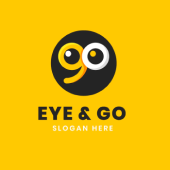HOW THE INTERNET HAS CHANGED THE WAY WE COMMUNICATE IN CRITICAL SITUATIONS?
It may sound as a cliché, but internet has changed many things: how we organise a Friday night, how your fridge tells you it’s empty, and – less evidently – how crises are formed and how we communicate when we have to face one. At the latest ‘Breakfast Club’ event of Café Group, we learnt from PR-strategist Dániel Gergő Pintér how these new crises are induced – and Gábor Fadgyas, senior expert of Café PR demonstrated what a complex crisis communications system can do for us.
The improvement of technology has caused many slippery situations escalating in the recent years, and many of those would not even have evolved into crises 30 years ago. How would Hillary Clinton have had an email scandal, if the internet hadn’t existed then, right?
Thus, the changing environment demands us to revise the way we have been handling crises – up to now.
The public has high expectations in puzzling situations: the concerned parties should be open, responsive, consistent – and of course fast. The first reaction after the outbreak is crucial anyway: it defines the intensity and the length of the crisis, and reveals whether the communication itself will cause another problem. Just like in 2017, when Hungarian BKK (Centre for Budapest Transport) reacted quite hostile when an ethical hacker pointed out some flaws in their newly launched e-ticket system. The app itself had serious security issues, but when the company pressed charges against someone who wanted to help – they just added fuel to the fire.
Crowd-management
Not only organisational communication is worthy of attention anymore: conspiracy theories, fake news must be dealt with just as thoroughly, simply because these messages can have just as huge an impact as official news. Dániel Gergő Pintér, expert of crisis communication showed us a great example of this effect. In 2016, after a bombing incident in Budapest, two policemen had been injured, this had caused an immerse avalanche of conspiracies, and the potential jihadist motivation had even triggered hysterical reactions.
Concerned audience in a crisis situation can be a disadvantage, but an asset as well: companies should focus on a constructive angle. On one hand, the audience is already emotionally moved – could the organisation alter their attitude positively and involve them? On the other hand, by the crisis, the company gets serious media coverage, and for free – as Dániel Gergő Pintér pointed out. How could the company use this unwanted but valuable spotlight in the favour of itself?
 Dániel Gergő Pintér
The great dilemma
Dániel Gergő Pintér
The great dilemma
In the first, easily manageable phase, there are just a few signs that the situation can evolve into a crisis, but the first reactions have key importance regarding the consequences. Similarly, the task of a crisis communication expert is paradoxical: they should be able to manage a potential critical situation before it even turns into a real crisis.
Be prepared
The dilemma shows that the most beneficial is proactive prevention, and this attitude requires perceptive professionals. Media management and protection of reputation should be considered of strategic importance, along with constant monitoring and designed issue management.
Gábor Fadgyas, senior PR expert introduced their crisis communication management system called ARC (Access, Resolve, Control), which they adopted from Fleishman Hillard’s assets. The ‘Access’ phase comes first: reviewing the business structure and existing plans, revealing the opportunities and weaknesses are crucial when building a crisis communication plan.
Then comes the phase called ‘Resolve’, which consists of assembling your crisis team and protocols, along with establishing a 24/7 media monitoring system. The organisation should reach out to its partners: educate media workers, supporters, influencers, and should not forget about themselves: communication trainings and simulation practices for leaders should be provided regularly.
 When it comes down
When it comes down
Your number one priority should be the management of the reality perceived by the public: treat the problems emerging on their side. Based on this perception, look deep into yourself, your organisation, and try to solve the original problems that come out, not only the symptoms of the trouble – suggested Dániel. Use this opportunity to see how the company can evolve, and which practices you ought to change. While doing your best to keep everything together, you can also change plans, opt for something better, and: remember the restoring communication afterwards – prompted Gábor.
Last comes the serious list of don’ts: never lie, never ignore or understate the problem. And it’s also a losing strategy to shut out, blame or hold up the media – in a crisis situation, they should always be in the home team.
Author: Dóra Pethő, International Communication Assistant, Café Communications
Image source:
https://unsplash.com/
 Dániel Gergő Pintér
The great dilemma
In the first, easily manageable phase, there are just a few signs that the situation can evolve into a crisis, but the first reactions have key importance regarding the consequences. Similarly, the task of a crisis communication expert is paradoxical: they should be able to manage a potential critical situation before it even turns into a real crisis.
Be prepared
The dilemma shows that the most beneficial is proactive prevention, and this attitude requires perceptive professionals. Media management and protection of reputation should be considered of strategic importance, along with constant monitoring and designed issue management.
Gábor Fadgyas, senior PR expert introduced their crisis communication management system called ARC (Access, Resolve, Control), which they adopted from Fleishman Hillard’s assets. The ‘Access’ phase comes first: reviewing the business structure and existing plans, revealing the opportunities and weaknesses are crucial when building a crisis communication plan.
Then comes the phase called ‘Resolve’, which consists of assembling your crisis team and protocols, along with establishing a 24/7 media monitoring system. The organisation should reach out to its partners: educate media workers, supporters, influencers, and should not forget about themselves: communication trainings and simulation practices for leaders should be provided regularly.
Dániel Gergő Pintér
The great dilemma
In the first, easily manageable phase, there are just a few signs that the situation can evolve into a crisis, but the first reactions have key importance regarding the consequences. Similarly, the task of a crisis communication expert is paradoxical: they should be able to manage a potential critical situation before it even turns into a real crisis.
Be prepared
The dilemma shows that the most beneficial is proactive prevention, and this attitude requires perceptive professionals. Media management and protection of reputation should be considered of strategic importance, along with constant monitoring and designed issue management.
Gábor Fadgyas, senior PR expert introduced their crisis communication management system called ARC (Access, Resolve, Control), which they adopted from Fleishman Hillard’s assets. The ‘Access’ phase comes first: reviewing the business structure and existing plans, revealing the opportunities and weaknesses are crucial when building a crisis communication plan.
Then comes the phase called ‘Resolve’, which consists of assembling your crisis team and protocols, along with establishing a 24/7 media monitoring system. The organisation should reach out to its partners: educate media workers, supporters, influencers, and should not forget about themselves: communication trainings and simulation practices for leaders should be provided regularly.
 When it comes down
Your number one priority should be the management of the reality perceived by the public: treat the problems emerging on their side. Based on this perception, look deep into yourself, your organisation, and try to solve the original problems that come out, not only the symptoms of the trouble – suggested Dániel. Use this opportunity to see how the company can evolve, and which practices you ought to change. While doing your best to keep everything together, you can also change plans, opt for something better, and: remember the restoring communication afterwards – prompted Gábor.
Last comes the serious list of don’ts: never lie, never ignore or understate the problem. And it’s also a losing strategy to shut out, blame or hold up the media – in a crisis situation, they should always be in the home team.
Author: Dóra Pethő, International Communication Assistant, Café Communications
Image source: https://unsplash.com/
When it comes down
Your number one priority should be the management of the reality perceived by the public: treat the problems emerging on their side. Based on this perception, look deep into yourself, your organisation, and try to solve the original problems that come out, not only the symptoms of the trouble – suggested Dániel. Use this opportunity to see how the company can evolve, and which practices you ought to change. While doing your best to keep everything together, you can also change plans, opt for something better, and: remember the restoring communication afterwards – prompted Gábor.
Last comes the serious list of don’ts: never lie, never ignore or understate the problem. And it’s also a losing strategy to shut out, blame or hold up the media – in a crisis situation, they should always be in the home team.
Author: Dóra Pethő, International Communication Assistant, Café Communications
Image source: https://unsplash.com/












